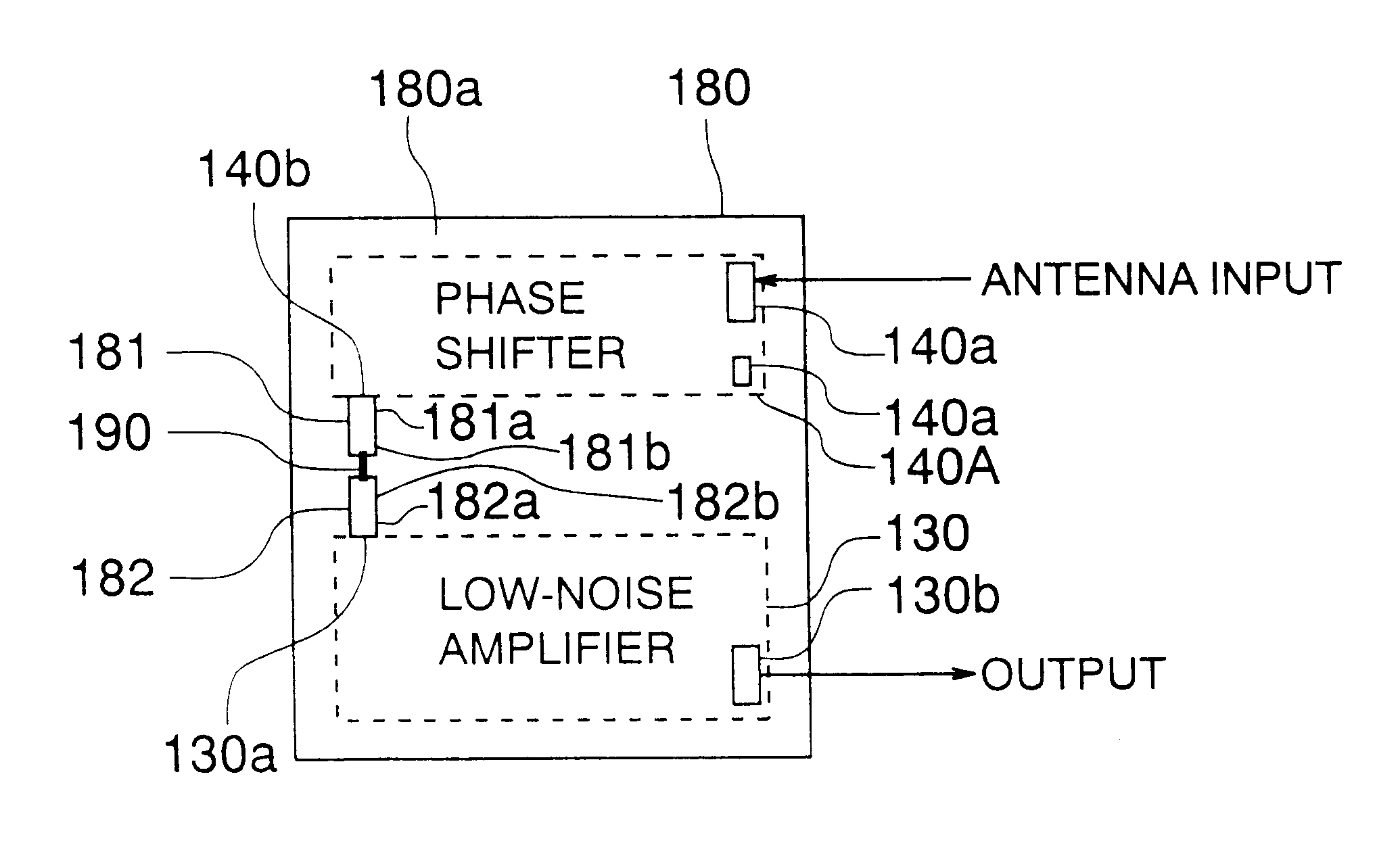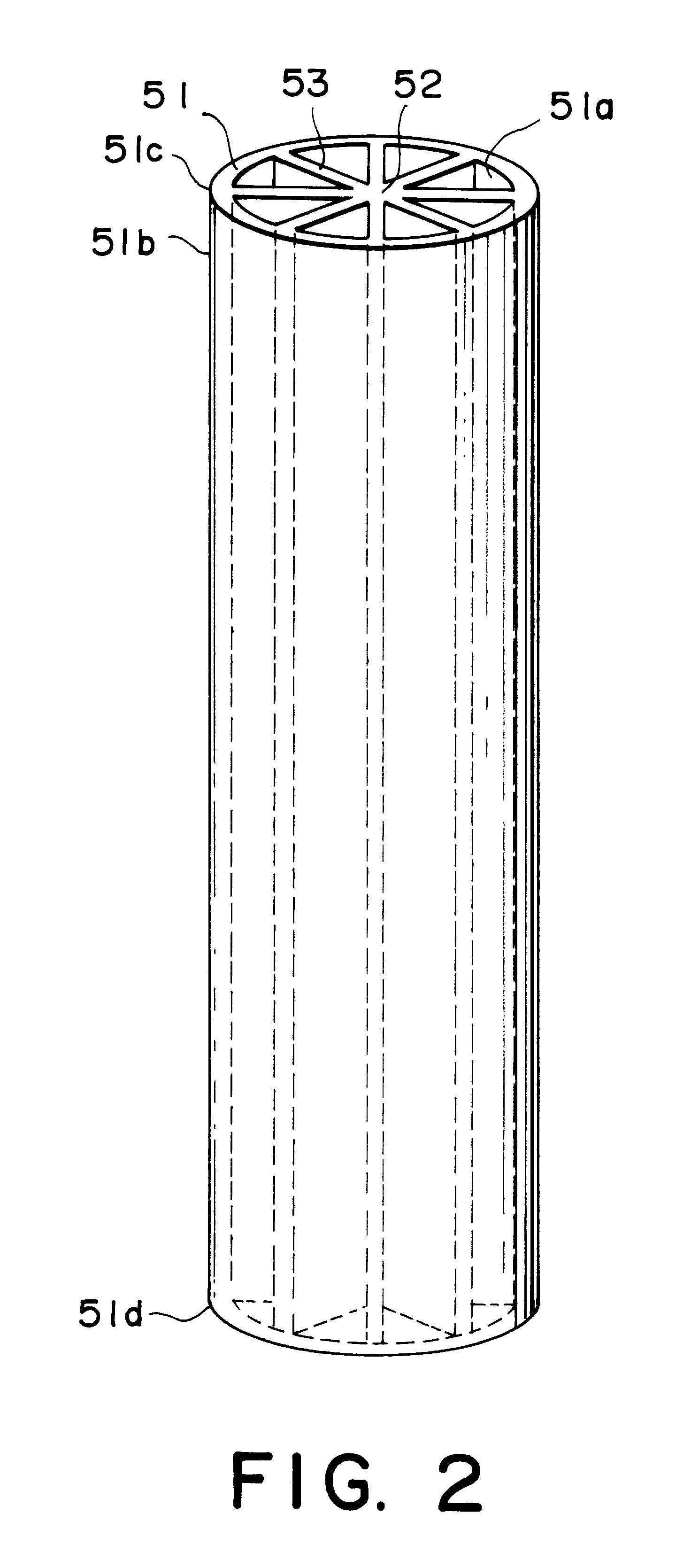Helical antenna, antenna unit, composite antenna
a technology of composite antennas and antenna leads, applied in the direction of helical antennas, non-resonant long antennas, radiating elements structural forms, etc., can solve the problems of requiring a large amount of material on manufacturing, remarkably difficult to really wind the plurality of antenna lead members around the outer peripheral surface, and a large amount of solid cylindrical components. to achieve the effect of strengthening the structur
- Summary
- Abstract
- Description
- Claims
- Application Information
AI Technical Summary
Benefits of technology
Problems solved by technology
Method used
Image
Examples
first embodiment
Referring to FIGS. 1A and 1B, the description will proceed to a helical antenna 50 according to this invention. FIG. 1A is a perspective view of the helical antenna 50. FIG. 1B is a plan view of the helical antenna 50.
The illustrated helical antenna 50 comprises a hollow cylindrical member 51 made of insulator. The hollow cylindrical member 51 may be called a bobbin or a cylindrical dielectric core. The hollow cylindrical member 51 has a center axis O extending in a longitudinal direction A.
As shown in FIG. 2, the hollow cylindrical member 51 has an inner peripheral surface or wall 51 a and an outer peripheral surface or wall 51b. The helical antenna 50 comprises a center rod 52 which is coaxial with the center axis O. The helical antenna 50 further comprises eight ribs 53 which are disposed between the center rod 52 and the inner peripheral surface 51a of the hollow cylindrical member 51. The eight ribs 53 symmetrically extend in a radial manner at equal angular intervals as shown ...
second embodiment
Referring to FIG. 6, the description will proceed to a helical antenna 50A according to this invention. The illustrated helical antenna 50A comprises the hollow cylindrical member 51 made of insulator. The hollow cylindrical member 51 has a relative dielectric constant or a relative permittivity .di-elect cons. r of a range between two and four. The hollow cylindrical member 51 has the center axis O which extends in the longitudinal direction A, the inner peripheral wall 51a, and the outer peripheral wall 51b. The hollow cylindrical member 51 has the upper end portion 51c. The hollow cylindrical member 51 is made of material such as plastic.
The helical antenna 50A further comprises the first through the fourth leads 621 to 624 which are wound around the outer peripheral wall 51b of the hollow cylindrical member 51 in the helix fashion as shown in FIG. 6. In the example being illustrated in FIG. 6, inasmuch as the first through the fourth leads 621 to 624 are wound around the outer p...
third embodiment
Referring to FIG. 11, the description will proceed to a helical antenna 50B according this invention. The illustrated antenna 50B comprises a hollow cylindrical dielectric core 51 made of insulator (dielectric). The hollow cylindrical dielectric core 51 has the center axis O extending in the longitudinal direction A and the outer peripheral surface 51b. In the example being illustrated, the hollow cylindrical dielectric core 51 is made of substantially plastic having a hollow cylindrical shape.
The helical antenna 50B further comprises the first through the fourth antenna lead members 621, 622, 623, and 624 each of which is made of conductor. The first through the fourth antenna lead members 621 to 624 are wound around the outer peripheral surface 51b of the hollow cylindrical dielectric core 51 except for a tip portion 50f of the hollow cylindrical dielectric core 51. The first through the fourth antenna lead members 621 to 623 substantially have the same size, the same shape, and t...
PUM
 Login to View More
Login to View More Abstract
Description
Claims
Application Information
 Login to View More
Login to View More - R&D
- Intellectual Property
- Life Sciences
- Materials
- Tech Scout
- Unparalleled Data Quality
- Higher Quality Content
- 60% Fewer Hallucinations
Browse by: Latest US Patents, China's latest patents, Technical Efficacy Thesaurus, Application Domain, Technology Topic, Popular Technical Reports.
© 2025 PatSnap. All rights reserved.Legal|Privacy policy|Modern Slavery Act Transparency Statement|Sitemap|About US| Contact US: help@patsnap.com



